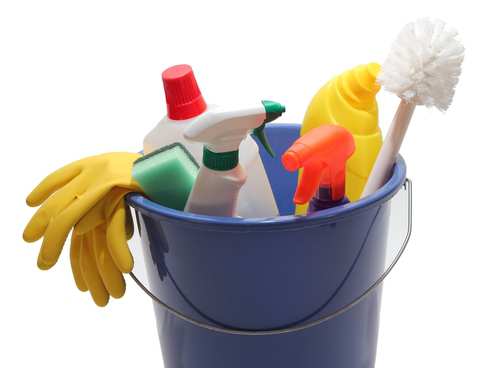Spring Cleaning: Tips For Your Website

With Spring just around the corner, people are beginning to focus on what they need to clean out and improve-things that need a bit of an update going forward in 2013.
For most, it's a thorough cleaning of the house and home - getting rid of clutter, old newspapers and leftover holiday trimmings that have been lying around for far too long. But for some, Spring cleaning can mean taking stock in an important part of your business, and making it really shine. If you run a blog or website, it might be time to do some online cleaning to make sure you're ready for a happy, successful 2013.
Here are five tips on how to do your own website spring cleaning:
1. Search and rescue - find the bottlenecks
Performance problems can exist on your site that you're not even aware of. These bottlenecks include bad code, JavaScript errors and 404 errors. These can all impact the performance of your site from behind the scenes. There are a wide variety of online testing tools that can help you identify these potential problems. Some of the tools you can use to test your site are:
In addition to testing your site to see which files may be causing issues, the services above will also recommend some fixes to help you improve the performance of your site.
2. The faster, the better
We've all seen those AT&T commercials, the ones with children offering suggestions and metaphors for why "faster is better."-and let's face it, they're right. So while you might not be able to tape a cheetah to your website's back, you can use performance boosting and monitoring services for your site like CloudFlare, PageSpeed and other CDNs. You should also check with your hosting provider to see what third-party services they offer for simple performance boosts that are easy to turn on from your control panel.
3. Work with what you've got - optimize your database
Making sure that queries are being processed as fast as possible is another way you can help fine-tune your website. You can do this by reducing the size of your graphics and images by keeping forms and reports short, optimizing JavaScript and CSS, and by compacting regularly - delete old objects and records.
4. Sweep up the social media plugins
The trend today is simple - if you didn't tweet it, tag it, like it, vote on it or poke it, then it probably didn't happen. As a site owner, you would like to have every social media channel highlight every move you make, but having a lot of different social media widgets or plugins on your site can seriously impact its performance. Try pruning the ones that are a "need to have" and focus on building a network with the social media channels that work best for you.
5. Throw out the trash - remove ad programs that aren't performing
While monetizing a website is important for most site owners, a decent number of them go overboard and throw multiple ad platforms on their site to help bring in revenue. The problem here is that too many ad widgets can slow down your site, while also possibly discouraging visitors from clicking and staying (remember that people want to engage with your site's content, not with multiple ads for various products that may not be targeted to them.)
Take stock of which ads are working and remove the ones that are not. There are also many other site monetization options out there that don't rely on ads, like VigLink and LinkWorth, which both monetize the links within your blog or website.
So while you're cleaning out your closet in your personal life, be sure to give your business's website some attention this spring - and let us know if any of these tips work for you.
Subscribe to Our Newsletter!
Latest in Marketing








